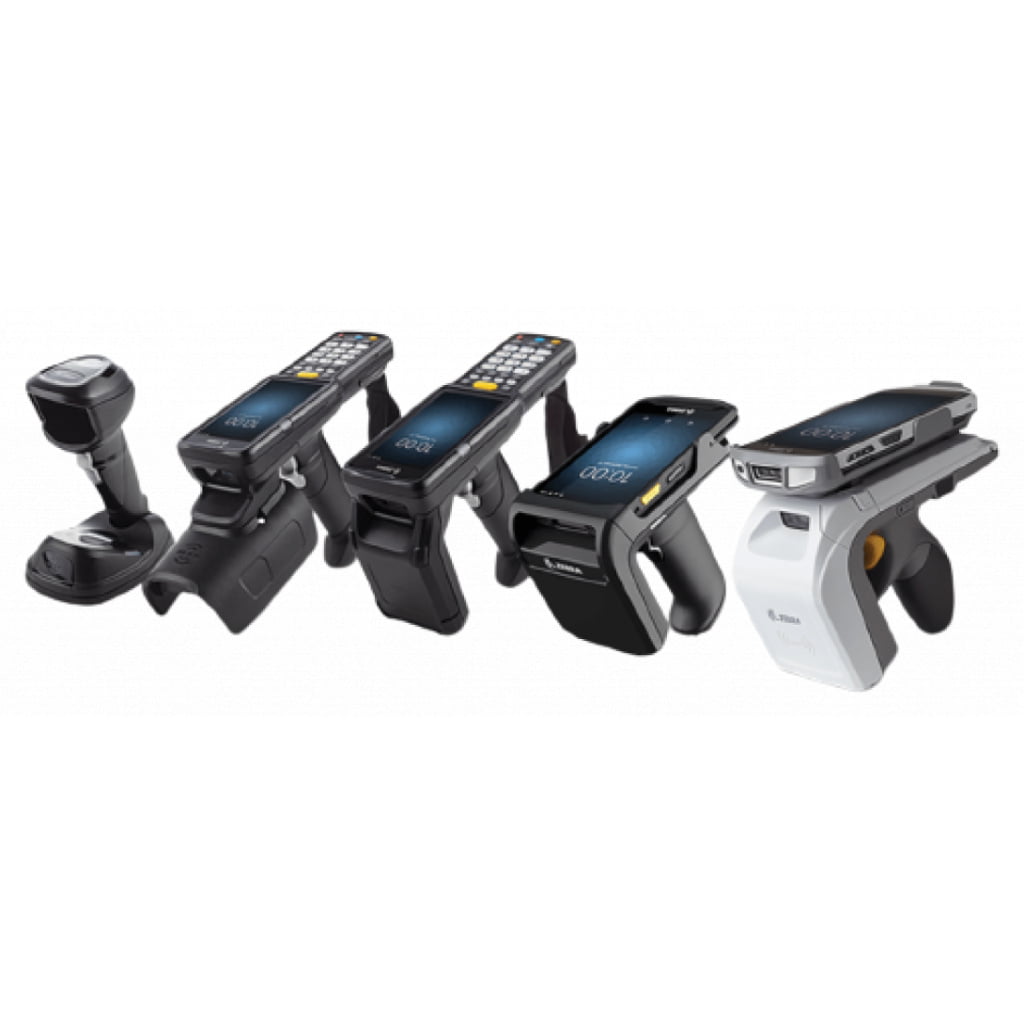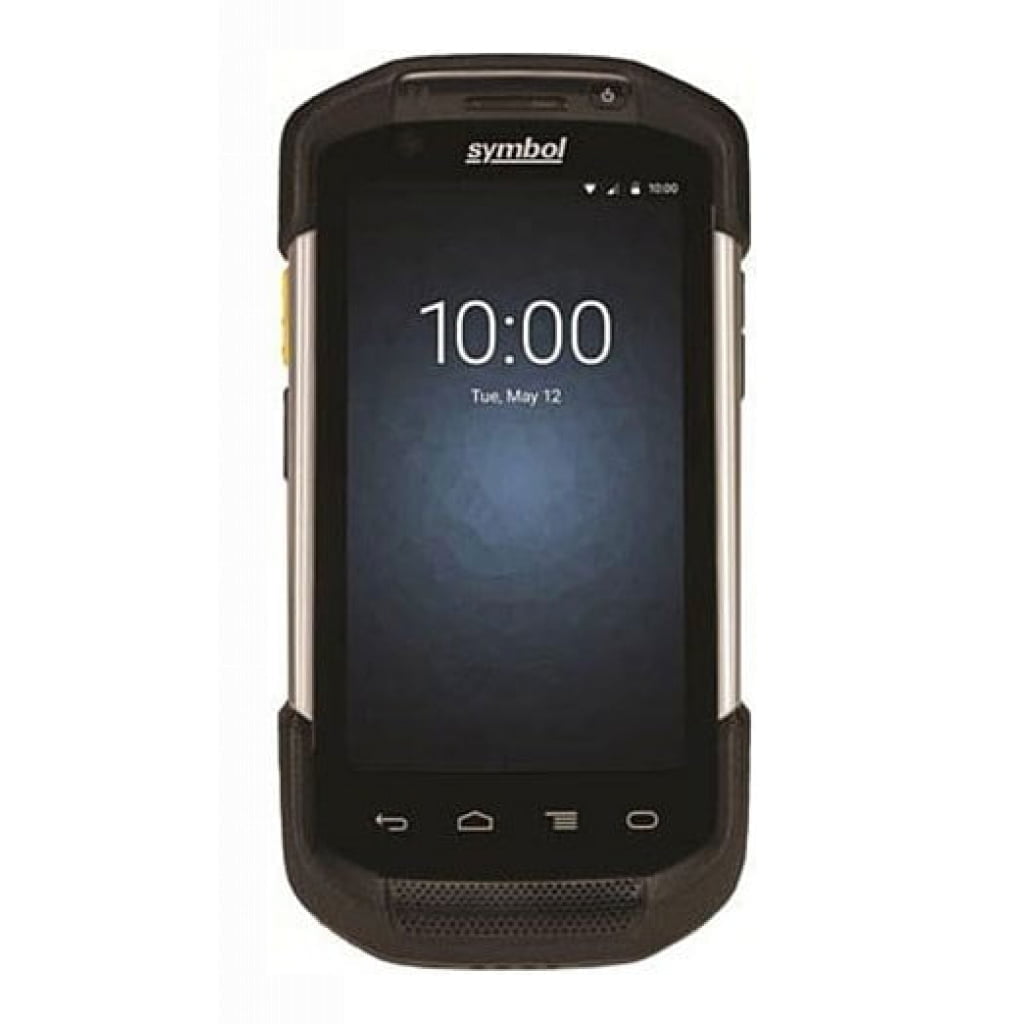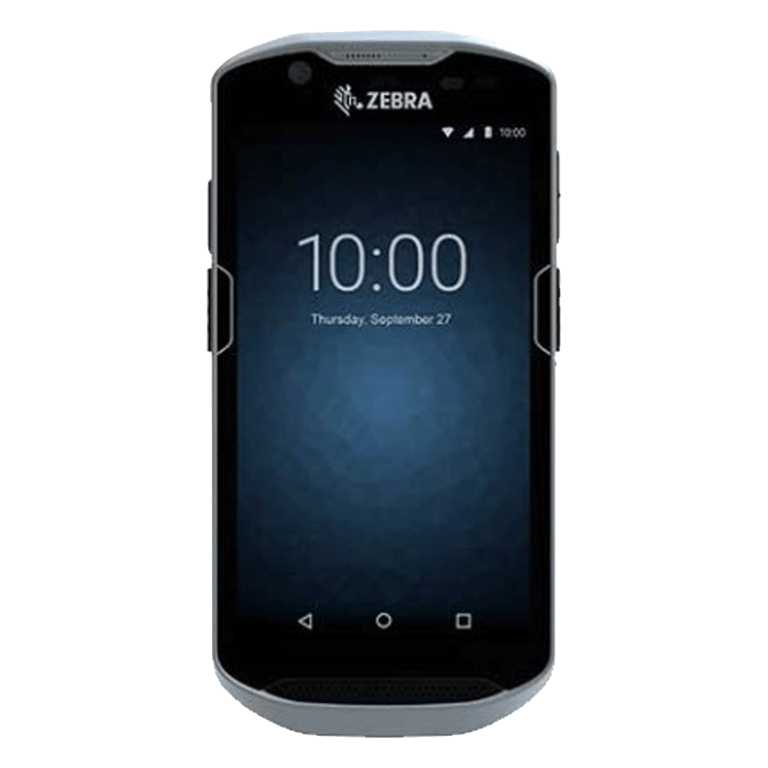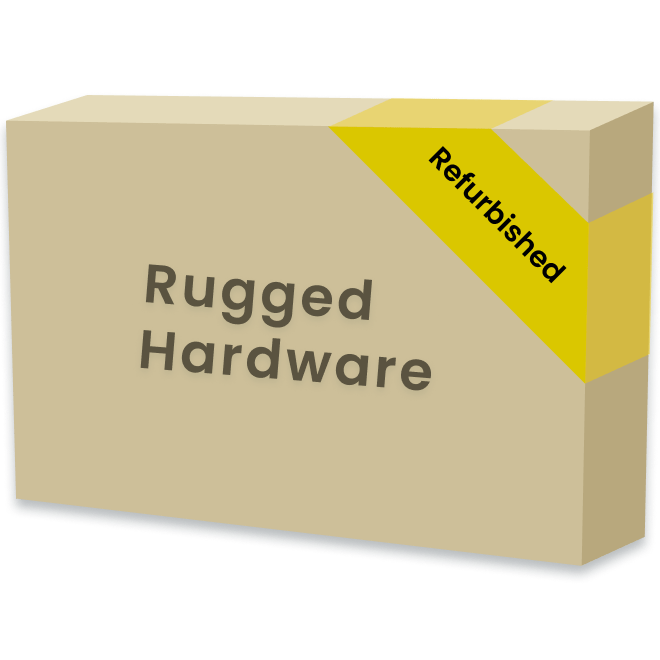In the bustling world of retail and logistics, where efficiency and accuracy are non-negotiable, the choice of technology can make or break operations. Enter the realm of zebra barcode scanners, a stark contrast to conventional scanning solutions. These devices aren’t just about reading lines and spaces; they embody innovation and reliability, designed to meet the dynamic demands of modern businesses. With their robust features, they stand out as pivotal tools in streamlining processes, enhancing productivity, and elevating customer satisfaction. Whether it’s the rugged build for harsh environments or the wireless connectivity for seamless operations, zebra barcode scanners offer a comprehensive solution that addresses not just today’s needs but also tomorrow’s challenges.

Zebra Technologies embarked on its journey in 1969. Initially, they focused on manufacturing high-speed electromechanical products. Over time, they shifted their focus towards barcode printing and scanning solutions. By the 1980s, Zebra had introduced its first barcode printer.
The evolution of Zebra scanners mirrors advancements in technology and changing market needs. From simple handheld devices to sophisticated models capable of reading 2D barcodes and connecting wirelessly, these scanners have come a long way.
Their development has been marked by significant milestones. For instance, the introduction of the DS8100 series revolutionized retail environments with unparalleled scanning performance.
Zebra scanners find their place across various sectors. Retail stands out as a primary beneficiary, where speed and accuracy are paramount. These scanners streamline checkout processes and inventory management.
Healthcare is another critical area. Here, Zebra’s solutions ensure patient safety through accurate identification and tracking. They support medication administration and sample collection workflows.
In manufacturing, efficiency gets a boost from these scanners. They aid in asset tracking and supply chain management, ensuring that operations run smoothly.
Logistics companies rely on them for package sorting and delivery tracking. This reliance underscores their versatility across different operational landscapes.
Several features set Zebra scanners apart from competitors. Their durable design ensures reliability in harsh environments, making them suitable for industrial settings. The resilience against drops and exposure to dust or water speaks volumes about their build quality.
Another standout feature is the advanced data capture technology. This allows for quick reading of barcodes in any condition, whether damaged, dirty or poorly printed. Such efficiency supports businesses in maintaining high productivity levels.
Moreover, Zebra’s commitment to innovation is evident in their use of software tools like DataCapture DNA. This suite enhances scanner functionality while simplifying integration and management tasks for IT departments.
Connectivity options further enhance their appeal. With support for Bluetooth® and Wi-Fi, these scanners offer flexibility in how data is transmitted to backend systems.
Zebra scanners stand out for their robust construction. They are designed to withstand the rigours of daily use in demanding environments. This durability ensures that they continue to function reliably, even after repeated drops or exposure to dust and water. Their resilience translates into lower maintenance costs and fewer interruptions in workflow, making them a preferred choice for industries where harsh conditions are the norm.
Manufacturers have rigorously tested these devices to meet high standards of toughness. As a result, businesses can rely on Zebra scanners for consistent performance, day in and day out.
At the heart of Zebra’s utility is its advanced data capture technology. These scanners excel at reading both 1D and 2D barcodes, ensuring versatility across various applications. Whether it’s traditional barcodes on product labels or QR codes for mobile payments, Zebra scanners offer swift and accurate scanning.
This capability is crucial in today’s fast-paced business environments where efficiency and error reduction are paramount. The technology behind these scanners includes intelligent algorithms that enable them to read damaged or poorly printed barcodes, further enhancing their utility.
Wireless connectivity is another key feature of Zebra barcode scanners. They support various wireless protocols, including Wi-Fi and Bluetooth, facilitating easy integration into existing networks. This flexibility allows for seamless communication with other devices, such as point-of-sale systems, computers, and mobile devices across different operating systems.
The compatibility with multiple operating systems ensures that Zebra scanners can adapt to diverse IT ecosystems. Whether it’s Windows, macOS, or Android, these scanners connect effortlessly, enabling businesses to leverage their existing infrastructure without the need for costly upgrades or replacements.
Zebra barcode scanners stand out due to their advanced imaging technology. They capture data with remarkable speed and accuracy, making them a top choice for various industries. This efficiency stems from sophisticated software that processes images quickly, ensuring seamless scanning even in challenging conditions.
Users benefit from the ability to scan barcodes in any state – whether damaged, dirty, or poorly printed. This resilience against common scanning hurdles significantly reduces downtime and enhances productivity.
At the heart of Zebra’s superior performance lies its proprietary PRZM Intelligent Imaging technology. This feature sets Zebra scanners apart, providing unmatched clarity and scanning precision. PRZM technology optimizes the scanner’s ability to decode barcodes swiftly, translating into faster checkout times and efficient inventory management.
It achieves this by enhancing image capture with software algorithms that improve contrast and sharpen edges. As a result, even barcodes that would traditionally pose challenges are easily read.
In today’s digital age, data security is paramount. Recognizing this, Zebra incorporates robust security features within its scanners to safeguard sensitive information. These measures ensure that data captured remains secure from the point of scanning through to transmission and storage.
Encryption protocols protect data in transit, preventing unauthorized access or breaches. Users can trust Zebra scanners to handle sensitive information such as personal identification numbers or financial data with utmost security.
Zebra barcode scanners stand out for their long-term value. These devices are not just about the initial purchase price; they embody cost-effectiveness throughout their lifecycle. Businesses find that the durability and reliability of Zebra products lead to fewer replacements or repairs, translating into significant savings over time.
They offer advanced scanning technology, as discussed in the previous section on “Technology Behind Zebra Scanners”, which ensures efficiency and speed in operations. This technological edge reduces downtime and increases productivity, further enhancing their cost-effectiveness.
Another cornerstone of Zebra’s offering is its comprehensive support and maintenance services. Zebra understands that even the most reliable equipment requires occasional maintenance or updates. They have crafted a support system designed to address issues swiftly, minimizing operational disruptions.
Their customer service teams are knowledgeable and responsive, providing peace of mind to businesses that rely heavily on barcode scanning for daily operations. The availability of extensive warranties and service contracts adds another layer of security, ensuring that businesses can get the most out of their investment.
As businesses grow, their needs evolve, requiring solutions that can scale accordingly. Zebra’s barcode scanners are built with scalability in mind, allowing for seamless integration into existing systems or easy expansion as business demands increase. This flexibility is crucial for companies aiming for growth without wanting to overhaul their entire inventory management or point-of-sale systems.
Zebra offers a range of products suitable for various industries and sizes of operations, from small retail setups to large logistical operations. This versatility ensures that there is a Zebra scanner solution ready to scale with your business.
The TC75 model stands out for its rugged design, tailored specifically for industrial environments. It boasts a robust exterior that can withstand drops, dust, and water exposure. This durability ensures the device remains operational in challenging conditions, from warehouses to construction sites.
Its feature set complements the demanding requirements of these sectors, with high-performance scanning capabilities that quickly read barcodes in any condition. The device’s resilience translates to lower repair costs and downtime, making it a cost-effective solution for businesses.

Conversely, the TC57 scanner shines in retail and hospitality settings. Its sleek design is not just about aesthetics; it facilitates ease of use for employees who are often mobile and interact directly with customers. The device supports advanced touch-screen technology and offers intuitive interfaces that enhance user experience.
Its capabilities extend to capturing high-quality photos, videos, and signature capture, vital for inventory management and customer service. The TC57 is designed to improve efficiency in fast-paced environments where time and accuracy are paramount.

Both models boast extended battery life, a critical feature ensuring devices stay powered through long shifts without needing frequent recharges. This endurance supports uninterrupted operations, which is crucial in industries where every second count. Enhanced battery technology means these scanners can last multiple shifts, providing reliable performance when it matters most.
Security features on the TC75 and TC57 models are unparalleled. They come equipped with enterprise-class security protocols to protect sensitive information against unauthorized access. This aspect is especially important given the increasing cyber threats facing businesses today.
Both devices support secure data transmission and storage, ensuring customer data and business information remain confidential. These security measures align with the benefits of choosing Zebra products discussed earlier, highlighting their commitment to safeguarding client interests while delivering top-notch performance.
Refurbished Zebra barcode scanners offer significant cost savings compared to new models. Businesses can save up to 50% on the purchase price, allowing for budget allocation towards other operational needs. These devices undergo rigorous testing and certification processes, ensuring they meet high standards of functionality and reliability.
However, potential drawbacks include shorter warranty periods and the possibility of cosmetic blemishes. It’s crucial for buyers to weigh these factors against the financial benefits.

When purchasing refurbished Zebra scanners, looking for certified products is essential. Certified refurbished units have been inspected, repaired (if necessary), and tested to ensure they perform like new ones. Buyers should also inquire about the refurbishing process, including any replaced components and software updates.
It’s advisable to purchase from reputable vendors that provide detailed product descriptions and transparent about the refurbishment process. This approach can mitigate risks associated with quality and longevity.
Zebra offers warranty options for both new and refurbished scanners, though terms may vary. New Zebra scanners typically come with a standard one-year warranty, while refurbished units might have a shorter coverage period. However, extended warranties are available for purchase, providing additional protection.
Understanding the warranty terms and support services available is critical before making a decision. Zebra’s customer support team assists with technical issues, offering peace of mind to businesses relying on barcode scanning technology.
Seamless integration of Zebra barcode scanners into existing IT frameworks requires strategic planning. Businesses must assess their current technological environment to ensure compatibility. This includes evaluating the operating systems on which these devices will run and ensuring network capabilities can support new scanner deployments.
Organisations often overlook the importance of software compatibility. Zebra offers comprehensive software development kits (SDKs) that facilitate custom application development. These SDKs are vital for creating tailored solutions that maximise the utility of barcode scanners within unique business processes.
The introduction of Zebra scanners into operational workflows can significantly enhance efficiency. They streamline data capture processes, reducing manual entry errors and accelerating transaction times. This improvement is particularly evident in sectors like retail, logistics, and healthcare, where speed and accuracy are paramount.
Businesses report various operational efficiencies after integrating Zebra barcode scanners. These include faster inventory turnovers, improved employee productivity, and enhanced customer satisfaction. For instance, a retail chain experienced a 20% reduction in checkout times, directly attributable to the faster scanning speeds and high reliability of Zebra devices.
Developing custom applications for Zebra scanners unleashes their full potential within business operations. The availability of SDKs allows organisations to tailor functionalities specific to their needs. For example, a logistics company might develop an app that integrates scanner data with their warehouse management system for real-time inventory tracking.
This bespoke approach not only enhances operational efficiency but also provides a competitive edge by optimising workflows unique to the business.
Retailers have seen dramatic improvements in inventory management since integrating Zebra barcode scanners. One high-profile case involved a multinational clothing retailer. They reported a 20% reduction in inventory discrepancies within the first six months of use.
The technology allowed for real-time stock updates, enabling staff to replenish items efficiently and avoid overstocking. Customers benefited from accurate stock information, enhancing their shopping experience.
In logistics, Zebra scanners have proven indispensable. A leading courier company highlighted their ability to track packages more accurately, reducing lost parcels by 15%. This improvement was pivotal during peak delivery periods.
Their robust design ensured reliability even in harsh conditions. This durability reduced downtime and maintenance costs, contributing to a healthier bottom line.
Manufacturers have praised the scanners for streamlining assembly lines and quality control processes. A notable example is an automotive parts manufacturer that achieved a 25% faster assembly time after adoption.
They attributed this efficiency to the scanners’ precision in tracking components throughout the production cycle. This accuracy minimized errors and waste, significantly improving product quality.
Businesses across sectors have recorded enhanced customer service levels due to the speed and accuracy of Zebra scanners. A grocery chain experienced a 30% decrease in checkout times, directly impacting customer satisfaction positively.
Staff could serve customers faster and with fewer errors, making shopping more pleasant and efficient for consumers.
Zebra Technologies has long been at the forefront of barcode scanning innovation. The future promises even more revolutionary changes, with advanced technologies shaping the next generation of devices. Experts speculate that upcoming Zebra scanners will leverage cutting-edge optics and imaging technologies to deliver faster, more accurate scans under any condition. This includes low light environments and scanning barcodes on highly reflective surfaces.
Moreover, developments in connectivity are expected to enhance the integration of scanners with various enterprise systems, facilitating real-time data sharing and analytics. Such advancements will not only streamline operations but also significantly reduce errors.
The incorporation of AI and machine learning into Zebra’s barcode scanners is set to redefine their functionality. Future models are likely to offer predictive analytics, automatically adjusting scan settings for optimal performance based on the environment or barcode condition. This intelligent adaptation ensures efficiency and accuracy in diverse operational scenarios.
AI-driven features could also improve user experience by providing voice commands and natural language processing, allowing for hands-free operation and reducing the learning curve for new users. The potential for AI to enable scanners to learn from scanning patterns and predict maintenance needs is another area ripe for exploration.
Sustainability is increasingly becoming a priority in technology development, and Zebra Technologies is poised to lead by example in this regard. Future scanner models are expected to incorporate eco-friendly materials, reducing the environmental impact associated with their production and disposal.
Energy efficiency is a key focus area. Innovative power management technologies will ensure that scanners use less energy without compromising performance, contributing to greener operations across industries.
By integrating sustainable practices into their design and manufacturing processes, Zebra underscores its commitment to environmental stewardship while meeting the demands of eco-conscious consumers.
Exploring the world of Zebra barcode scanners reveals a blend of robust technology, key features, and tangible benefits that stand to revolutionise your operational efficiency. From understanding the intricate technology behind these devices to highlighting the standout models like the TC75 and TC57, we’ve journeyed through the essentials that make Zebra scanners a smart choice for businesses aiming to stay ahead. The comparison between refurbished and new models, along with real-world success stories, underscores Zebra’s role in shaping the future of barcode scanning.
Embrace the next step in operational excellence by integrating Zebra scanners into your workflow. Whether you’re upgrading existing systems or venturing into the realm of advanced barcode scanning for the first time, the insights shared here equip you with the knowledge to make informed decisions. Dive deeper into what Zebra can offer your business—because your leap towards enhanced efficiency starts today.
Zebra scanners boast rugged designs, high-speed scanning, wireless connectivity, and superior decoding technology, ensuring efficiency in various environments.
Zebra’s proprietary PRZM Intelligent Imaging technology provides unparalleled data capture performance by improving decode speed and accuracy.
The TC75 is designed for rugged industrial environments with enhanced durability, while the TC57 caters to sleeker enterprise needs without compromising on functionality or performance.

Ulrik is an industry veteran with over two decades of expertise working with rugged computers and mobile barcode scanners. Brands include Panasonic, DELL, Getac, Zebra, and Honeywell/Intermec. He is known for his commitment to delivering products and solutions that increase operational efficiency. Dedicated to following new market trends and client satisfaction, Ulrik is a trusted advisor where rugged computers and mobile barcode scanners must be deployed.

Micro Nordic was founded in 2004 with the objective of offering customers fast, reliable and cost-efficient Rugged Mobile Product Solutions. We specialize in delivering current, End-of-Life and hard to find laptops, tablets and barcode scanners from leading manufacturers, such as PANASONIC, GETAC, DELL, ZEBRA & HONEYWELL.
We operate globally and can deliver bespoke turnkey solutions based on your requirements.
Micro Nordic ApS
c/o a. Hartrodt
11411 NW 107th Street
Suite 6
33178 Miami
USA